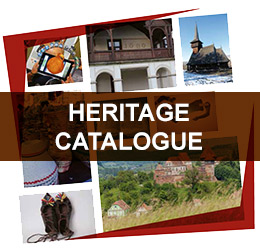
Latest news all news
-
16 Nov. 2017
Results brochure PA16/RO12 -
22 Aug. 2017
Facts regarding the Aromanian heritage -
17 Aug. 2017
Fortified churches (video)
Public procurement
- More information will be available soon
Follow us on Facebook
Culture and nature in Transylvania –Past and Future
Website Facebook pageProject Promoter: Hungarian University Federation from Cluj-Napoca
Project Partner:
- Bergen University Museum
- Nordic Anthropological Film Association
Project duration: 16 months, but no later than 31.07.2016
Total project amount: RON 255,244.48, i.e. EUR 67,645.89
Grant amount: RON 229,515.84, i.e. EUR 51,835.18
The project aims to promote the cultural and natural heritages of a multi-ethnic region that harbours many cultural and biodiversity hotspots in the SW part of Sălaj County, North-West Romania. The region is one of the most interesting areas of Romania from many points of view: it is multi-ethnic and religiously mixed, while almost each village contains a heritage building or a building of cultural significance, and high biodiversity characterizes the area due to still existing traditional landscape management techniques. This is a unique social-ecological system, which no longer persists in most part of Europe due to technological advancements in the past decades that caused considerable damage in the ecological systems. Yet, the region is one of the poorest in Transylvania, a comprehensive evaluation of its values has never been carried out, thus its values are not included in any touristic routes, offers. Through the current project the promoter wants to offer the region's population a nature-friendly development possibility by promoting its values. It also targets the region's non-governmental organizations, churches, communal councils, and local businessmen.
Therefore, the objectives of the project are:
(1) Identifying the cultural and natural heritages of the region;
(2) Building a database containing all the heritages of the investigated area;
(3) Investigating the human-nature interactions, e.g. traditional landscape management techniques, that still persist in the region, and led to the survival of high biodiversity in the region;
(4) Identifying the specificity of each village – identification of the local brands;
(5) Promoting the values of the region both on local, national and international level, e.g. establishing touristic routes, editing catalogues – identification of the regional brand;
(6) Promoting and strengthening intercultural communication through highlighting the positive aspects of cultural interactions among ethnic communities of the region;
(7) Raising public awareness regarding the values of these regions. Finally, as an added value, through this project, the promoter wishes to establish a unique trans disciplinary and transnational research group that studies the local cultural heritages and landscape management techniques in a common framework using the complex methodologies of ecology, art history, archaeology, cultural and visual anthropology.
The outcomes of the project, in addition to a comprehensive evaluation of the region's cultural and natural values, are the identification of local and regional brands that could promote the region both on national and international level, and documentation of traditional landscape management techniques. The indicators of the project's success are: a comprehensive database on cultural and natural assets of the region, scientific studies on the biodiversity, the tangible and intangible cultural heritages of the region, a catalogue containing these assets, touristic information brochures, a webpage presenting the cultural and natural assets and making the studies accessible to public, several meetings for raising public awareness, an international workshop on human-nature interaction.
Project news
- Interdisciplinary scientific workshop, 22-24 April 2016
- Meeting with representatives of the local authorities
- Public meetings, 25 May – 29 June 2016
IMPACT
The cultural and natural heritage of Sălaj County region was evaluated by experts, resulting in an integrated management plan, a study in local branding and scientific studies in biodiversity, art history, archaeology and cultural antropology. The results are available at http://cultureandnature.ro/ro/activitati/.
The results of the evaluation as well as previous existing data were used to create a database (http://cultureandnature.ro/ro/baze-de-date/) with the following sections:
- Intangible cultural heritage: http://5.2.203.8:8080/canthropos
- Tangible cultural heritage: http://5.2.203.8:8080/arsites
- Biodiversity heritage: http://5.2.203.8:8080/biodivs
- Images: http://cultureandnature.adatbank.ro/#/ro/images
Communication at project level includes the dedicated website http://cultureandnature.ro/ro/ and the Facebook page https://www.facebook.com/cultureandnatureintransylvania/?ref=bookmarks.
The project results are visible through:
Promotion materials: flyers, catalogues, maps, presentation books;
International workshop on culture and nature interation;
8 public information sessions for local stakeholders and a photo exhibition.
Other photos




